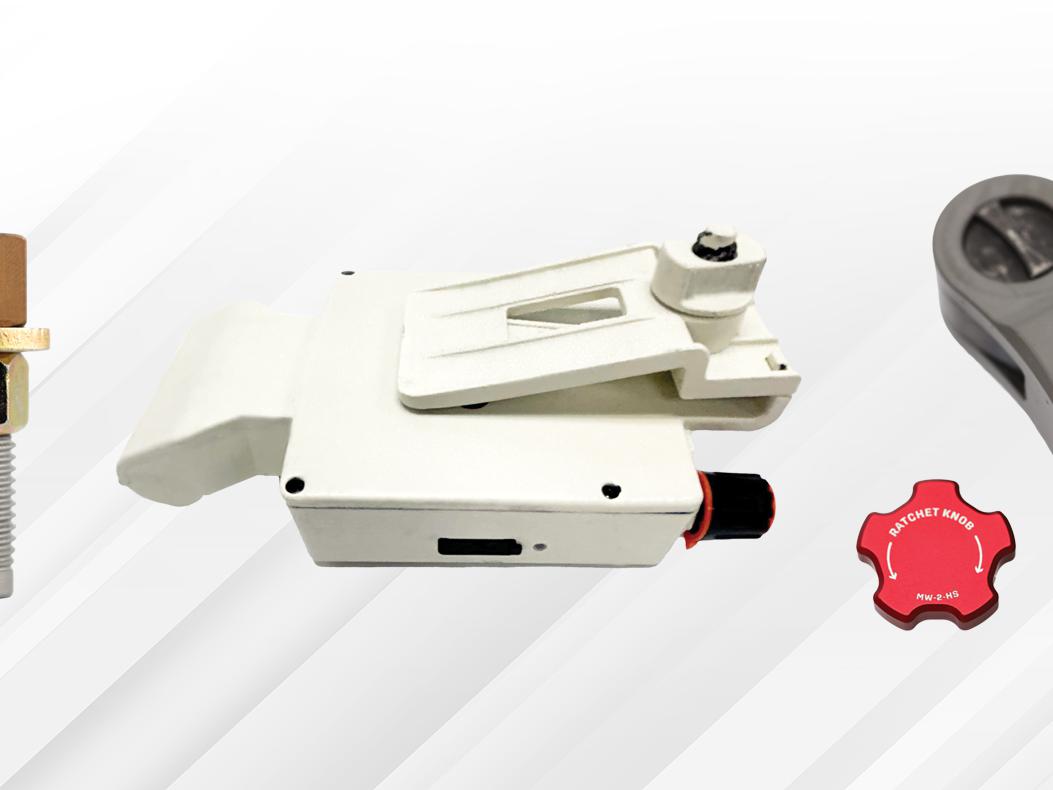Problem Solvers

Race track management does have another option for an effective barrier system that falls in between traditional tire systems or metal railing and high-end soft walls.
THE Problem: Outdated or expensive race track barriers
THE Solution: A low-cost plastic track barrier system that actually protects racers
Race cars are safer than ever. New technologies and innovative designs have brought unprecedented protection to drivers through a wide array of developments, including stronger roll cages, better helmets, and more effective restraint devices.
But while these innovations are a boon to driver safety, in contrast, many race tracks still rely on outmoded, inadequate barriers to protect drivers and cars from hard impacts against walls and railings.
Combined with the increased performance of race cars these days, that can be a dangerous mix. Just ask Chris Scribner of Scribner Plastics in Rancho Cordova, California. While racing an asphalt Super Late Model about five years ago he got tangled up with another car on the track. It instantly brought him up close and personal with the limitations of a tire barrier, one of the most common forms of race track wall protection. “So we got to where that tractor tire was, and he hit it first and took the tire with him,” Scribner recalled. “And I was coming in and there was nothing there for me. I hit driver side first on the blunt impact of that concrete wall.”
Scribner was lucky—he sustained only minor injuries. But the story could have ended much worse for both drivers. Although tires are a widely accepted form of track barrier, they have significant limitations—tires can be surprisingly unyielding on impact; they can bounce cars into traffic; and they can scatter onto the track. In addition, tire barriers tend to be unwieldly to work with, consuming valuable time to assemble, repair, or reconfigure.
Soft walls are a better solution, but the expense of such systems often prevents smaller venues from using them. “On some of the big NASCAR tracks, you can see the technology they put in,” explained Scribner. “But clearly every short track in America can’t afford to put in a wall that’s designed to absorb a 200-mile-an-hour impact.”


Fortunately, Scribner Plastics has developed a reasonably priced, highly effective alternative—polyethylene plastic segments that link together to form walls of almost any length and shape. The Link Barrier System works by yielding on impact, progressively slowing vehicles to reduce the chance of blunt-force trauma or vehicle damage.
The segments of this system are relatively short, and their connections can hinge to almost any angle. This enables them to conform to a wide array of shapes, including irregular wall sections that are often left exposed. “We had a competitor one time hit the wall on our track offramp,” said Bill McAnally of All American Speedway, Roseville, California. “It was one of those things that looked impossible, but it happened. So we put some Scribner block barriers in there. Not long after that, a driver bounced off a wall and hit that plastic barrier. I guarantee it saved him some injury.”
In addition to providing greater protection for drivers, these plastic barriers are also easier and faster to set up than tire barriers. The quick setup is important when building a temporary circuit in public spaces. But it’s also a factor in the event of a crash. If a barrier replacement is ever required, it takes just minutes to do the job, resulting in faster crash clean-up and reduced race delays.
Plus, most tracks can cover their urgent hazards for a reasonable total, explained Scribner. “Every track is different, but $2,000 to $3,000 is something that can usually get you some pretty respectable protection.”
Furthermore, the Link Barrier System can be thought of as a long-term investment, making the cost even more attractive. “We have systems out there that are over 15 years old,” noted Scribner. “They’ve sat out in sunshine and then in the cold in the winter, and they’re still going strong.”
Adding it all up, plastic barriers can be a significant improvement for any track, making them a worthwhile investment for a number of reasons. But perhaps most important of all is the human element. “I’ve never had to deal with a fatality,” said McAnally. “But I couldn’t imagine how hard that would be. I don’t want to have to talk to the wives or kids of a racer that’s in a hospital getting treated for something I could have helped avoid.”
SOURCES
–
All American Speedway
allamericanspeedway.com
Scribner Plastics
linkbarriersystem.com
 MEMBERSHIP LOGIN
MEMBERSHIP LOGIN JOIN PRI
JOIN PRI


